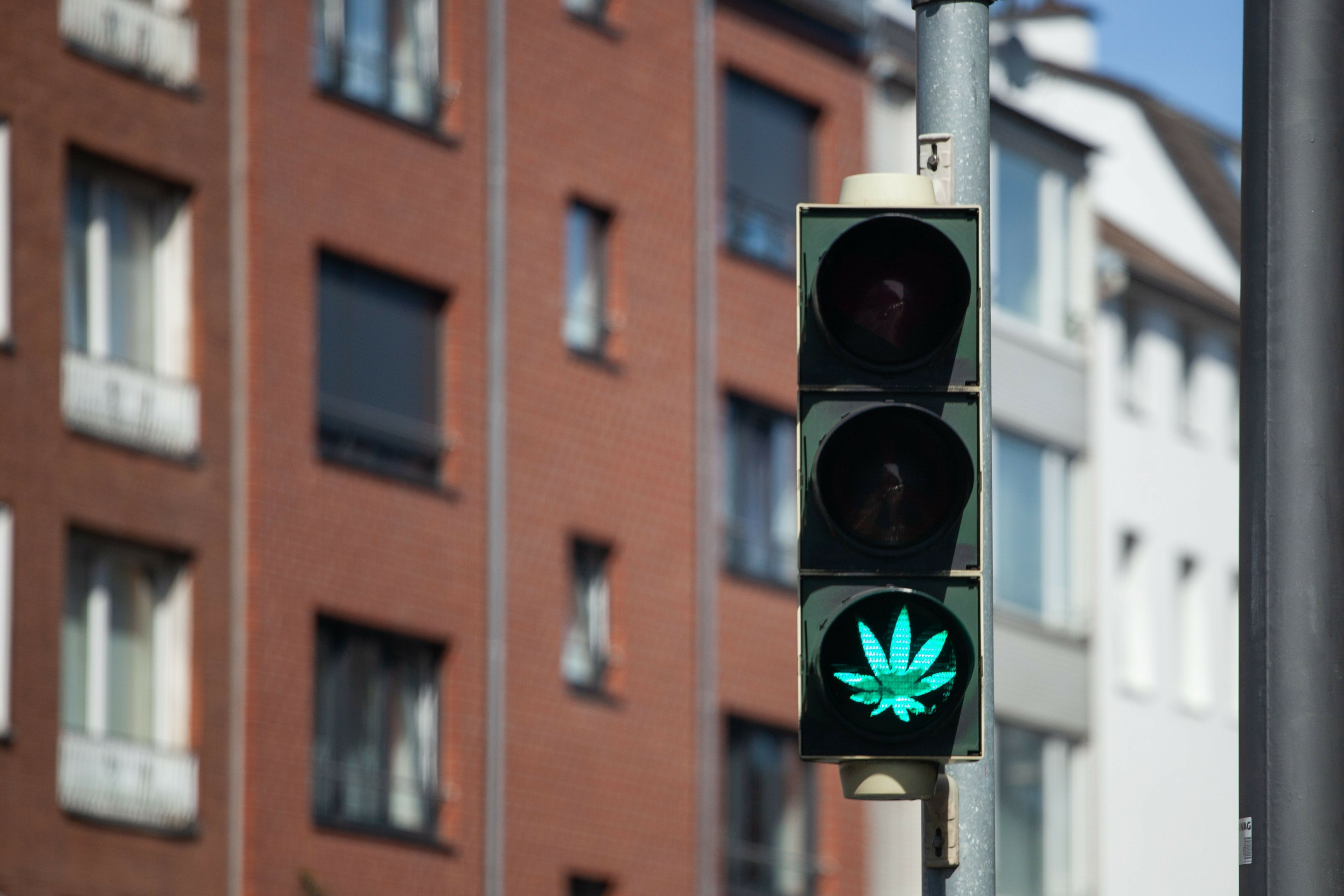
The Complex Intersection of Recreational Marijuana and Road Safety
The debate over marijuana legalization has long transcended discussions of personal freedom and potential medical benefits, steering into the critical realm of public safety, particularly on our roads.
As more states embrace legalized recreational marijuana, questions continue to rise about its impact on traffic accidents and fatal traffic crash rates. This topic isn’t just a matter of legal discourse but a significant public health concern, stirring a mix of opinions, interpretations, and most importantly, a need for data-driven conclusions.
It’s interesting that we have the debate on marijuana, but we don’t hear the outcries for any reform in alcohol use and driving performance. Now that we have a plant-based source of products that have the potential to actually help people, there’s a problem.
There is also the need for more context. If someone is in a fatal crash and tests positive for marijuana, that doesn’t necessarily mean they were under the influence of it at the time of the crash. Marijuana will stay in a person’s system much longer than alcohol will.
In this comprehensive analysis, we delve into the heart of this debate, armed with statistics and studies, to unravel the truth behind marijuana legalization and its real-world implications on highway safety.
Join us as we navigate through the fog of claims and counterclaims to present a clear picture of how recreational marijuana is reshaping, or not, the landscape of road safety.
The Impact of Marijuana Legalization on Fatal Crash Rates
A comprehensive study by the Casualty Actuarial Society, titled “Assessing the Impact of Marijuana Decriminalization on Vehicle Accident Experience,” analyzed U.S. and Canadian accident data from 2016 to 2019.
The study concluded that legalization and decriminalization did not make roads more dangerous in either country. Specifically, it found no statistically significant changes in the average cost per claim and claim frequency post-legalization in Canada, with similar findings in Québec (Quartz Advisor).
2020 and 2021 saw increases in traffic almost universally, regardless of the status of recreational marijuana legalization. Those two years were a bit of an outlier for motor vehicle accident deaths. Let’s be honest, those couple years were WILD not just in North America, but throughout the world.
But in the states that legalized recreational marijuana use in 2016, traffic fatalities fell at a rate of 11.6% between then and 2019, which is 1% higher than the U.S. average as a whole.
Too soon to say, “Put that in your pipe and smoke it?”
Recreational Marijuana Legalization and Traffic Safety
Research by the National Organization for the Reform of Marijuana Laws (NORML), assessing trends in fatal motor vehicle accidents in four legalization states (California, Maine, Massachusetts, Nevada) compared to five control states, found that traffic deaths fell by an average of 12% in the three years following recreational marijuana legalization.
Massachusetts saw the most significant drop of 28.6% post-legalization. In contrast, the control states saw a nearly 2% increase in deaths over the same period (NORML).
This data suggests that the legalization of recreational marijuana may not be the dire threat to road safety as some initially feared.
In fact, these findings challenge the notion that increased accessibility to cannabis directly correlates with higher rates of traffic incidents. It’s crucial to consider these results in the broader context of road safety and public health policies.
As we continue to explore the effects of recreational marijuana legalization, it becomes increasingly important to separate anecdotal fears from factual data, ensuring that policy decisions are informed by accurate and comprehensive information.
Nope, not too soon. Put that in your pipe and smoke it.
Legalized Recreational Marijuana Use: A Closer Look at the Data

Despite the observed decrease in traffic fatalities, it’s essential to note that marijuana use can impact cognitive function and motor skills. A study in The American Journal of Addictions found that marijuana intoxication significantly affects cognitive functioning, impacting safe driving abilities.
However, it also noted that these impairments are modest in actual road tests, especially among experienced marijuana users. This finding suggests that while there is an increased risk associated with cannabis use while driving, the effects varied significantly among individuals.
Furthermore, it’s important to consider other factors that contribute to road safety. For instance, the combined use of both alcohol and marijuana can exacerbate impairment, leading to an estimated increase in the likelihood of accidents.
This highlights the complexity of assessing the impact of legalized recreational marijuana use on road safety. The data indicates that while marijuana users may face certain risks, these are not always straightforward or consistent across different scenarios.
Additionally, the effects varied depending on the frequency and amount of cannabis use. Regular users might develop a tolerance that mitigates some of the cognitive impairments associated with occasional use. This variation underscores the need for more nuanced approaches in understanding and legislating marijuana use in the context of driving and overall public safety.
So while there is an increased risk associated with driving under the influence of cannabis, the actual impact of legalized recreational marijuana use on road safety is influenced by a range of factors, including individual tolerance, the presence of other factors such as alcohol, and the varying effects of cannabis on different marijuana users.
This complex interplay of factors calls for continued research and informed policymaking to ensure public safety in the era of legalized cannabis use.
The Influence of Retail Marijuana Sales on Traffic Safety
The relationship between retail marijuana sales and traffic accidents is complex and multifaceted. While marijuana is detectable in the system long after its effects have worn off, this does not directly correlate with increased traffic crash rates.
The data suggests that other factors, such as alcohol use and impaired driving from other substances, wearing a seat belt of not, time period of driving, urban vs rural roads, and someone’s natural reaction time also significantly influence road safety. This isn’t a black and white issue as so many are trying to make it out to be.
As states continue legalizing marijuana, particularly for recreational use, it’s crucial to monitor how this affects fatal traffic crash rates and injury crash rates. The introduction of medical marijuana laws has also played a role in shaping the landscape of recreational markets. These laws often precede the legalization of recreational cannabis and can provide early indicators of how changes in cannabis legislation might impact road safety.
Interestingly, in states with legalized recreational use, injury crash rates ranged from showing no significant change to a slight increase. This variation indicates that while there may be an increased crash risk associated with legalizing marijuana, the extent of this risk can differ based on local factors and enforcement policies.
Moreover, the development of recreational markets following legalization has led to a more regulated and potentially safer environment for cannabis consumption. However, the impact of these markets on road safety remains a subject of ongoing study. As these markets mature, it will be essential to continue monitoring their effects on fatal traffic crash rates and injury crash rates, ensuring that any potential risks are mitigated through effective policy and public education.
While the legalization and commercialization of marijuana through retail sales and recreational markets bring about changes in consumption patterns, the direct impact on road safety, particularly concerning fatal traffic crash rates and injury crash rates, requires ongoing observation and research.
The interplay of medical marijuana laws, consumer behavior, and enforcement strategies all contribute to the evolving narrative of cannabis legalization and its implications for traffic safety.
Legalize Recreational Marijuana: A Balanced Perspective on Fatal Traffic Crash Rates
The decision to legalize recreational cannabis must be viewed from a balanced perspective. While concerns about increased crash risk exist, the data does not consistently support a direct link to recreational marijuana use. Education on safe consumption practices and responsible use is crucial in recreational markets.
In this context, the role of organizations like the Insurance Institute for Highway Safety becomes pivotal. Their research and analysis provide valuable insights into the real-world implications of legalizing marijuana. For instance, the Insurance Institute has been instrumental in studying fatal crashes in states with legalized marijuana compared to comparison states where it remains illegal. This comparative analysis helps in understanding the broader impact of legalization on road safety.
Furthermore, early evidence from these studies suggests that while there might be an initial increase in fatal crashes following the subsequent onset of legalization, these numbers often stabilize over time. This indicates that the initial effects of legalization might be more related to a period of adjustment rather than a long-term increase in risk.
The Institute for Highway Safety also plays a critical role in this analysis. Their ongoing research into traffic safety trends provides a more nuanced understanding of how recreational marijuana legalization affects driving behaviors and fatal crashes. By comparing data from states that have legalized marijuana with those that have not, the Institute helps in identifying patterns and trends that are crucial for informed policymaking.
Navigating the Road Ahead with Informed Insights

As we take an early look at the impact of marijuana legalization on road safety, it’s clear that the journey is complex and multifaceted. The data on fatal car crashes and fatal crash rates presents a nuanced picture, one that requires careful analysis and ongoing observation.
Drivers involved in accidents in states with legalized cannabis show varied outcomes, indicating that fatal crash rates ranged depending on numerous factors, including enforcement policies and public awareness campaigns.
The estimated increases in traffic incidents following legalization, as highlighted in some earlier studies, need to be contextualized within broader time trends and societal changes. For instance, while there may be initial spikes in fatal car crashes, these often level off, suggesting that early reactions to legalization may not be indicative of long-term patterns.
Moreover, the death rates associated with road accidents in these states provide critical insights into the real-world effects of legalizing recreational cannabis. It’s important to consider these rates in comparison to drivers involved in accidents in states where marijuana remains illegal. Such comparisons offer a clearer understanding of the actual impact of legalization on road safety.
In conclusion, the journey towards understanding the full impact of marijuana legalization on road safety is ongoing. An early look at the data suggests that while there are challenges, they are not insurmountable. Continued research, informed policymaking, and responsible consumption are key to navigating this new landscape.
As we move forward, it’s crucial to keep an eye on the evolving trends and ensure that our roads remain safe for everyone.